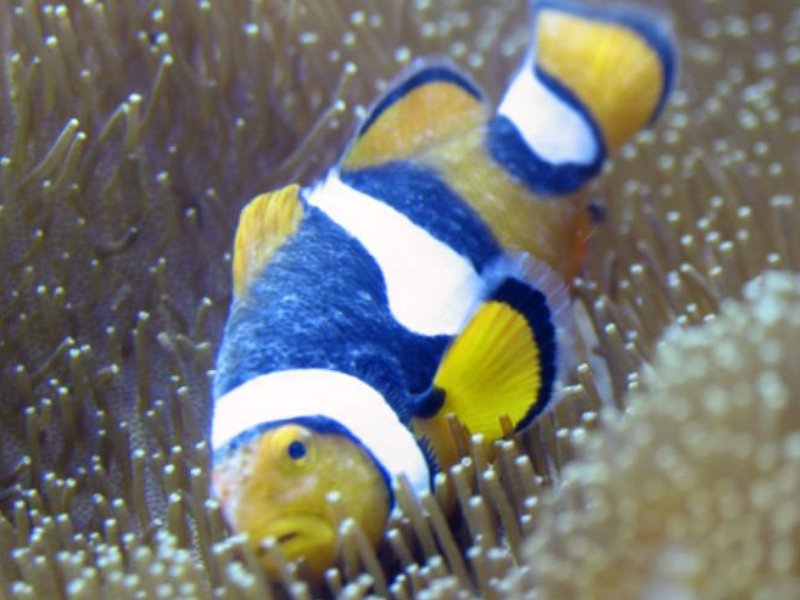How To Treat Brooklynella
If you're a fish owner, you know the importance of keeping your aquatic friends healthy. One of the most common diseases that affects fish is brooklynella, a type of parasitic infection that can be fatal if not treated in time. The good news is that there are ways to treat brooklynella and keep your fish healthy and happy.
The Pain Points of Dealing with Brooklynella
Dealing with brooklynella can be frustrating, especially if you don't know what to look for. Some of the symptoms of this disease include lethargy, loss of appetite, and white mucus covering the body. If left untreated, brooklynella can cause severe damage to the fish's gills, leading to difficulty breathing and ultimately death.
How to Treat Brooklynella
The first step to treating brooklynella is to isolate the infected fish from the others in the tank to prevent the spread of the disease. You can then begin treatment using a combination of medicated baths and aquarium salt. It's crucial to follow the instructions on the medication carefully and to maintain healthy water conditions in the tank to support the healing process.
Summary of Main Points
To summarize, brooklynella is a common parasitic disease that affects fish. It's essential to isolate the infected fish and begin treatment promptly to prevent further damage. By following medication instructions and maintaining healthy water conditions, you can successfully treat brooklynella and prevent it from spreading to other fish.
Personal Experience: Overcoming Brooklynella
When I first noticed my clownfish showing signs of brooklynella, I was worried about the health of my other fish. I immediately isolated the infected fish and began treatment, using medicated baths and aquarium salt. After a few weeks, I'm happy to report that all my fish are healthy and thriving. It's essential to remain patient and diligent in treating brooklynella to ensure successful results.
The Benefits of Preemptive Treatment
One of the best ways to deal with brooklynella is to prevent it from occurring in the first place. By maintaining healthy water conditions and providing a stress-free environment for your fish, you can lower the risk of brooklynella and other diseases.
Going Deeper with Brooklynella Treatment
There are several types of medication available to treat brooklynella, including copper-based solutions and antibiotics. However, it's critical to note that not all medications are suitable for all fish. It's important to consult with an experienced fish veterinarian or specialist to determine the best course of treatment for your fish.
The Importance of Proper Quarantine Procedures
One of the most effective ways to prevent brooklynella and other diseases is to follow proper quarantine procedures when introducing new fish to your tank. This includes isolating the new fish for a period of time and monitoring them for any signs of illness before introducing them to the main tank.
Personal Experience: The Importance of Regular Water Changes
When I first noticed signs of brooklynella in my tank, I realized that I had been neglecting my water change schedule. After increasing the frequency of water changes and maintaining healthy water conditions, I saw a significant improvement in my fish's overall health and vitality. Regular water changes are crucial in preventing and treating diseases like brooklynella.
Question and Answer
Q: Can brooklynella be transferred to humans?
A: No, brooklynella is not transferable to humans.
Q: How long does brooklynella treatment take?
A: The length of treatment can vary depending on the severity of the infection. It can range anywhere from a few days to several weeks.
Q: Can brooklynella be prevented?
A: Yes, brooklynella can be prevented by maintaining healthy water conditions, following proper quarantine procedures, and providing a stress-free environment for your fish.
Q: How do I know if my fish has recovered from brooklynella?
A: You can tell if your fish has recovered from brooklynella by observing their behavior and appetite. They should be active and eating regularly. It's also essential to continue monitoring your fish's health to prevent a relapse of the disease.
Conclusion
If you're a fish owner, it's crucial to know how to treat brooklynella. By following the proper steps and taking preventive measures, you can keep your fish healthy and happy. Remember to consult with an experienced fish veterinarian or specialist if you have any questions or concerns about treating brooklynella.
Gallery
How To Treat Brooklynella- Clownfish Disease - YouTube

Photo Credit by: bing.com / clownfish disease
Is This Brooklynella? / Is This Treatment Plan A Good Idea? | REEF2REEF
Photo Credit by: bing.com /
Clownfish Brooklynella Symptoms (How To Treat Your Clownfish)

Photo Credit by: bing.com /
Clownfish Brooklynella Symptoms (How To Treat Your Clownfish)

Photo Credit by: bing.com /
Brooklynella Clownfish Disease: Symptoms And Best Treatment

Photo Credit by: bing.com / clownfish mucus symptoms